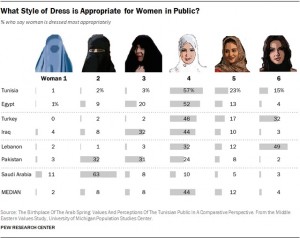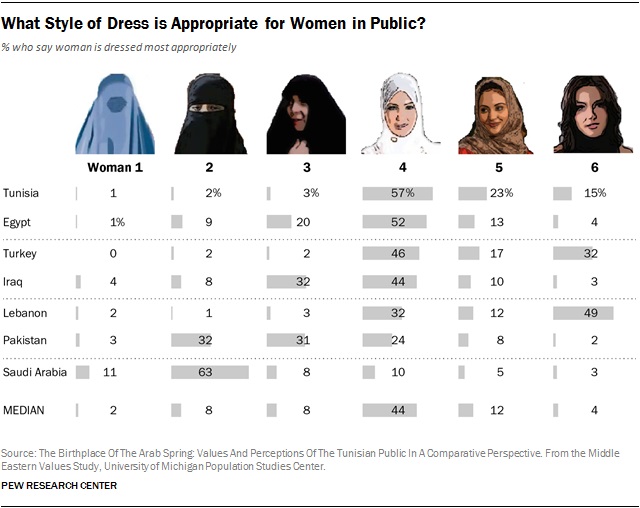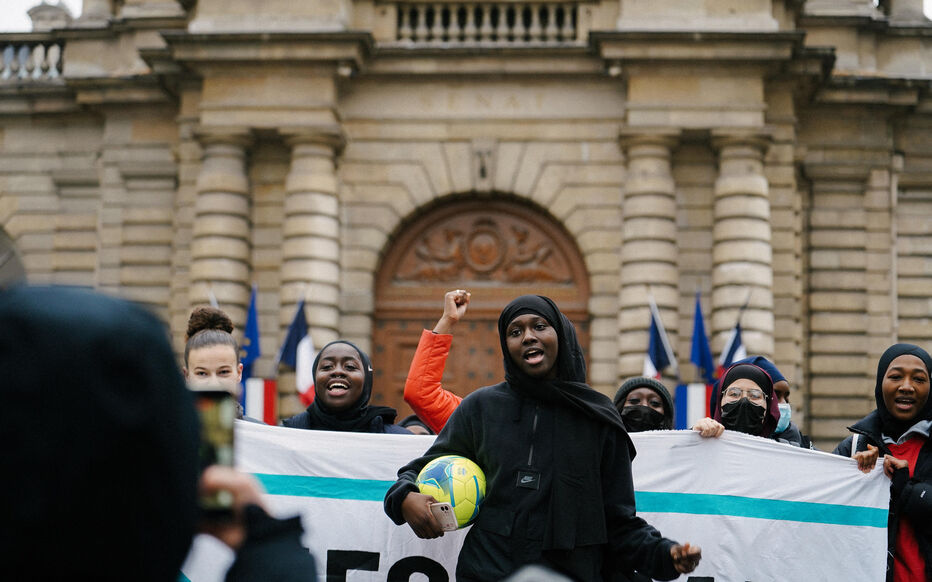January 21, 2014

“What dress is most appropriate for a Muslim woman in public?”
Researchers at the Population Studies Center at the University of Michigan asked the same question to both men and women of various age groups and different religious faiths in seven countries with a Muslim majority. The real focus of the research was post- revolution Tunisia, but scholars also decided to investigate responses in Egypt, Iraq, Lebanon, Saudi Arabia, Turkey and Pakistan. Each respondent was shown images of women. The left most image showed a women who was totally covered (burqa ), decreasing the pieces of cloth covering the woman from image to image until the last drawing, which depicted the subject as completely uncovered.
The findings concluded that on average the hijab (veil that covers the hair, forehead, ears and neck) was considered the most appropriate. You could say this is a compromise between the two extreme images. Another important aspect that the research shows is the partial open-ness to different styles of dress in Saudi Arabia as opposed to a greater closure in “post-spring” Egypt.
The research also included a question that went beyond mere aesthetics. Respondents were also asked: “Should the woman decide what to wear?
And this confirms the above trend: in Saudi Arabia, Lebanon, Turkey, and Tunisia, 50% of respondents where in favor of the free choice of women, as opposed to 22% and 14% in Pakistan and Egypt, respectively.
I must say that by scrolling through the research data, I returned several times to the word used in the original question: appropriate.
What do the researchers mean by this term? Appropriate for whom? For others or for the woman? Who can decide when attire is appropriate or not?
Beyond the specific object of this analysis, veil or no veil, I am always convinced that there is only one parameter to decide how a woman should dress: personal choice. Do not take me for naive, I am aware of the incendiary debates that surround these issues, especially in our cities. In my opinion, the most appropriate clothing is what makes a woman feel free and proud to express herself regardless of expectations or fashions of the moment.
The external influences on not only clothing but also on the image of a woman’s own body, is not unique to Muslim women, but rather something that applies to all women in the world. Let me give you another example. Last year a global campaign was launched called “Dark is beautiful” with the aim to emphasize the beauty of dark skin in societies like the West where fair skin is favored. The pressures of fair skin often prompt many black women to resort to toxic products that promise to lighten skin. We must reverse this situation.
Corriere della sera: http://lacittanuova.milano.corriere.it/2014/01/21/velo-donne-islam-qual-e-labbigliamento-giusto-in-pubblico-e-chi-lo-decide/
Original report: http://mevs.org/files/tmp/Tunisia_FinalReport.pdf






